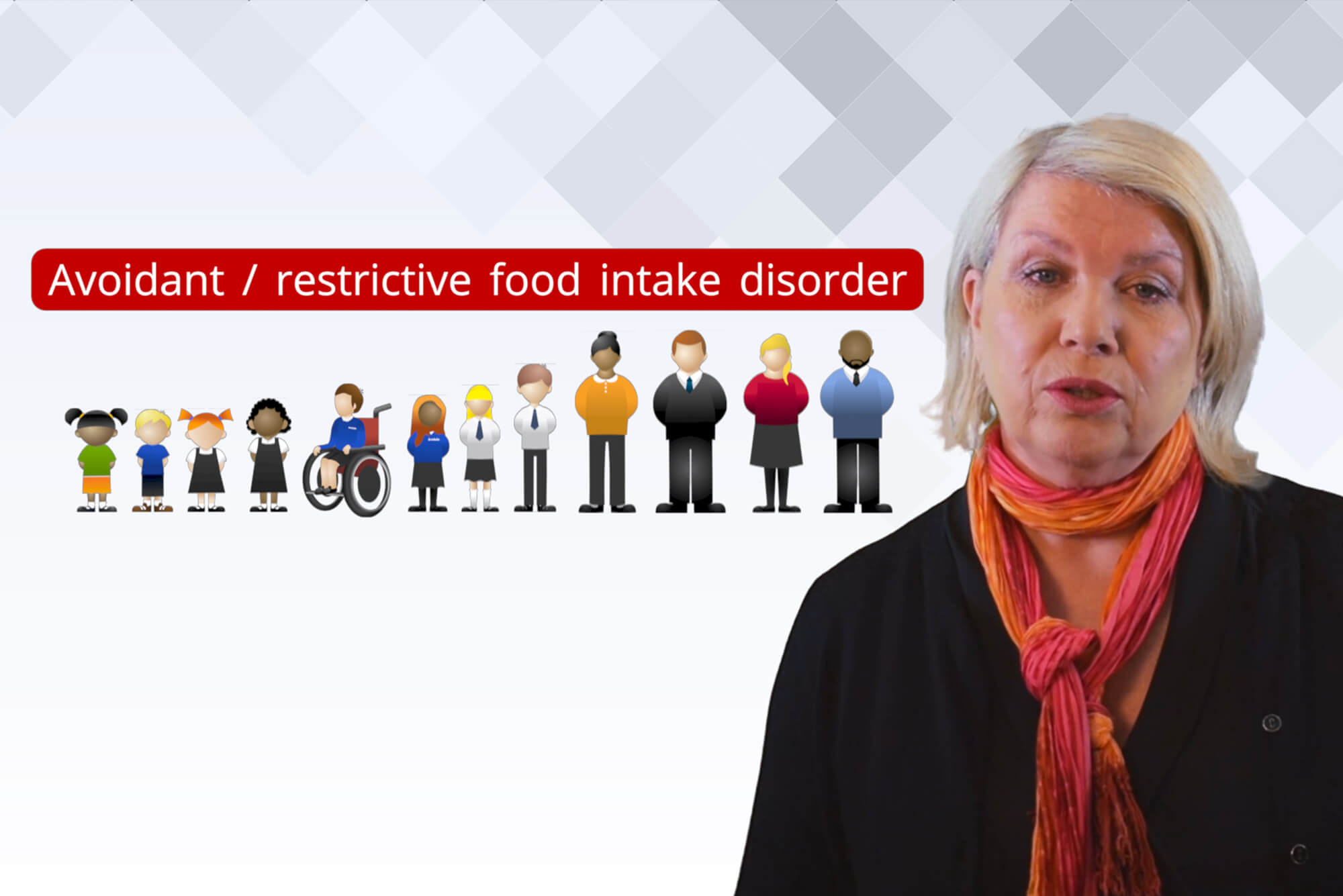Eating Disorders - Supporting children in Schools

As we highlighted in our recent article The rise in children needing help for serious mental health problems NHS Digital data shows hospital admissions for eating disorders are on an upward trend and rising among children and young people, an 82% rise across the last two years. In this article Sam Preston explores common eating disorders and offers some practical tips to support children in school settings.
Types of eating disorders:
Eating disorders are illnesses where people, male and female, experience severe disturbances in their eating behaviours and related thoughts and emotions. People with eating disorders typically become pre-occupied with food and their body weight. Some of the common eating disorders include:
Anorexia nervosa
Anorexia nervosa which generally develops during adolescence or young adulthood and tends to affect more women than men. People with anorexia generally view themselves as overweight, even if they are dangerously underweight. The tend to constantly monitor their weight, avoid eating certain food types and severely restrict their calories.
Signs associated with anorexia include:
- An inability to concentrate;
- Poor concentration;
- Low mood;
- Low self-esteem;
- A change in character;
- Sadness;
- Being easily tearful;
- Displaying uncharacteristic outbursts;
- Being anti-social, self-isolating;
- Being pre-occupied with food and / or having issues with particular foods;
- Being anxious around food;
- Having irrational thought;
- Absences from school.
Physical indicators of anorexia include:
- Noticeable weight loss;
- Skipping meals;
- Avoiding eating in the presence of others;
- Fatigue;
- Fainting;
- Being sad, moody and irritable;
- Poor memory;
- Slurred speech;
- Hair thins and becomes brittle;
- Skin is dry, bruises easily and can have a yellow tint;
- Swollen joints;
- Brittle nails;
- Lanugo – the growth of fine body hair;
- Constipation and bloating;
- Menstruation is disrupted or stops;
- A constant feeling of being cold;
- Inability to participate in physical activity;
- Where physical condition is so poor they are unable to attend school.
In addition the body may be further affected including:
- Changes to brain chemistry;
- Low blood pressure;
- Slow heart rate, palpitations and heart failure;
- Anaemia (the lack of enough healthy red blood cells to carry oxygen throughout the body);
- Kidney stones, kidney failure;
- Weak muscles, joint fractures and osteoporosis (a bone disease that occurs when the body loses too much bone, makes too little bone or both);
- Difficulties getting pregnant, higher risk of miscarriage and post-partum depression (depression following giving birth to a baby).
Bulimia nervosa
Bulimia nervosa which also generally develops during adolescence or young adulthood and tends to affect more women than men. People with bulimia frequently binge eat unusually large amounts of food in a specific time. Each binge continues until the person becomes painfully full. They then attempt to purge to compensate for the calories consumed by excessively exercising, forced vomiting, fasting and / or using laxatives, diuretics and enemas.
Signs associated with bulimia include:
- Poor concentration;
- Low mood;
- Being tearful;
- Mood swings;
- A change in character;
- Low self-esteem;
- Self-isolation from others / withdrawing socially;
- Fatigue (caused by poor sleep patterns);
- Outbursts;
- Irrational thought patterns.
Physical indicators of bulimia include:
- Eating large amounts of food;
- Drinking large amounts of fluids with a meal;
- Visiting the toilet during and / or straight after a meal;
- Cavities, gum disease and acid erosion to teeth;
- Sore throat and mouth;
- Moon face – swelling in the cheeks caused when extra fat builds up on the face;
- Chest pain;
- Muscle cramps, fatigue;
- Pins and needles in the arms or legs;
- Poor hair / skin condition;
- Poor sleep patterns;
- Sores on knuckles;
- Irregular menstruation;
- Sometimes low in weight.
In addition the body may be further affected including:
- Depression, anxiety and low self-esteem;
- Soreness, irritation and rupture to the throat and oesophagus;
- Anaemia (the lack of enough healthy red blood cells to carry oxygen throughout the body);
- Irregular heartbeat, weakening of the heart muscle, heart failure;
- Low pulse and blood pressure;
- Stomach ulcers;
- Constipation, irregular bowel movements, bloating, diarrhoea and abdominal cramping;
- Dehydration.
Binge eating disorder
Binge eating disorder is similar to bulimia however, people with the disorder do not use purging behaviours.Binge eating may affect the body including:
- Profuse sweating in the armpits;
- Stroke from high blood pressure;
- Enlargement of the heart, erratic beat and heart disease;
- Sterility of ovaries and cancer;
- Kidney stones, kidney failure due to high blood pressure;
- Varicose veins;
- Uterus / cervical cancers;
- Gallstones;
- Diabetes;
- Breast cancer.
Pica
Pica involves eating things that are not considered food e.g. soil, soap, chalk, paper, hair, cloth, wool or stones. People with pica have an increased risk of poisoning, infections and injuries to the gut.
Rumination disorder
Rumination disorder is a condition where a person regurgitates food they have previously chewed and swallowed, re-chews it then either spits it out or re-swallows it. The disorder can develop in infancy, childhood or adulthood and can result in weight loss and severe malnutrition which can be fatal.
Avoidant / restrictive food intake disorder
Avoidant / restrictive food intake disorder generally develops during infancy or early childhood and can persist into adulthood. It is equally common among women and men. Those with the disorder experience disturbed eating due to lack of interest in eating, distaste for certain smells, tastes, textures or temperatures of food.
How can children with eating disorders be supported in school?
Eating disorders are not about food, it is about controlling food intake as a way of coping with feelings that are making someone unhappy or depressed. As such, food becomes a problem as it is manipulated and used to help cope with painful situations, feelings or to relieve stress. These disorders have a profound effect on the person and their body and can lead to death either from the impact of the illness or through suicide.
There are some key good practice principles which should be applied. This includes:
- Ensuring all identified staff understand the pathway to be followed to enable delivery of the best possible support;
- Identification of who is best placed to directly support the pupil. This should be someone who the pupil has a connection with and feels comfortable to talk to;
- Demonstrating compassion and care;
- Developing trust;
- Awareness of the wider issues that may be affecting the pupil due to the impact of their eating disorder e.g. making / maintaining friendships;
- Ensuring the pupil has privacy when changing for PE or other activities;
- Making sure water is readily available;
- Ensuring the pupils has enough time to eat snacks and meals (this may be significantly longer than usual) and, if directed, opportunities to eat away from their peers. It is important to recognise that the pupil may feel uncomfortable at lunchtimes and that they are an ordeal they have to get through rather than a pleasurable experience.
Eating disorders are complex illnesses to treat, but recovery is possible. The actions taken by teachers and school staff to support pupils with diagnosed eating disorders should be guided by professional advice and support.
Want to know more about supporting mental health? Check out our Supporting Mental Health and Wellbeing training.
SSS Learning Safeguarding Director











